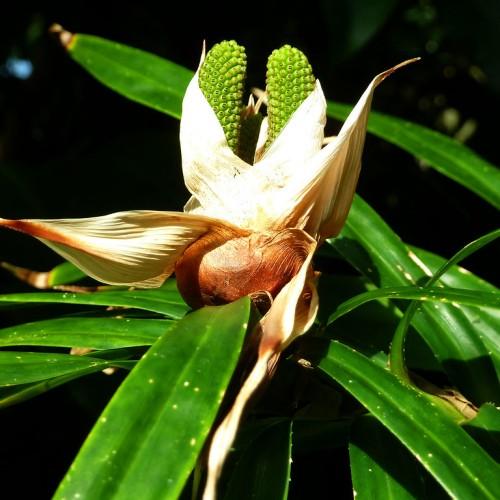
freycinetia
Freycinetia multiflora
Cycle:
Herbaceous Perennial
Watering:
Average
Hardiness Zone:
10 - 12
Flowers:
Flowers
Sun:
Part shade
Fruits:
Fruits Ready In Summer
Leaf:
Yes
Growth Rate:
Low
Maintenance:
Moderate
Drought Tolerant:
Yes
Salt Tolerant:
Yes
Thorny:
Yes
Care Level:
Medium
watering
Freycinetia multiflora requires regular watering in order to thrive. During the growing season (spring to autumn), they should be watered at least once a week; however, they may need more frequent watering if temperatures are high or if the soil is dry. It is best to water the soil deeply and thoroughly so that moisture reaches the plant’s roots. In winter, frequency of watering should be lessened as the plant enters its dormant state and will require less hydration. Watering should be applied when the soil is dry, usually every 2-3 weeks.
sunlight
Freycinetia multiflora requires a bright, sunny location in order to reach its full flowering potential. When grown indoors, it prefers a spot that receives at least 4 to 6 hours of bright, direct sunlight each day. When grown outdoors, it should be planted in a spot that gets full sun throughout the day, but can tolerate some light shade if necessary. During the summer months, Freycinetia multiflora should be expected to receive 8 to 10 hours of sunlight each day. In cooler climates, it is best to provide the plant with some protection from late afternoon sun and cold winds, by either growing it in a more sheltered spot, such as under the overhanging branches of a tree, or by providing some shade in the form of a canopy, such as a sunshade cloth.
pruning
Freycinetia (Freycinetia multiflora) should be pruned twice annually. Light pruning should be done in the early spring to remove any dead or damaged branches. Heavy pruning can be done in late summer to shape and maintain the desired size and form. Prune no more than 1-third of the plant at any time and avoid pruning too far back. Trim off any dead, broken, or diseased branches or shoots to help prevent the spread of disease. When cutting, use sharp, clean pruning shears and make sure to make cuts in a slanted or angled manner just above a healthy bud.
